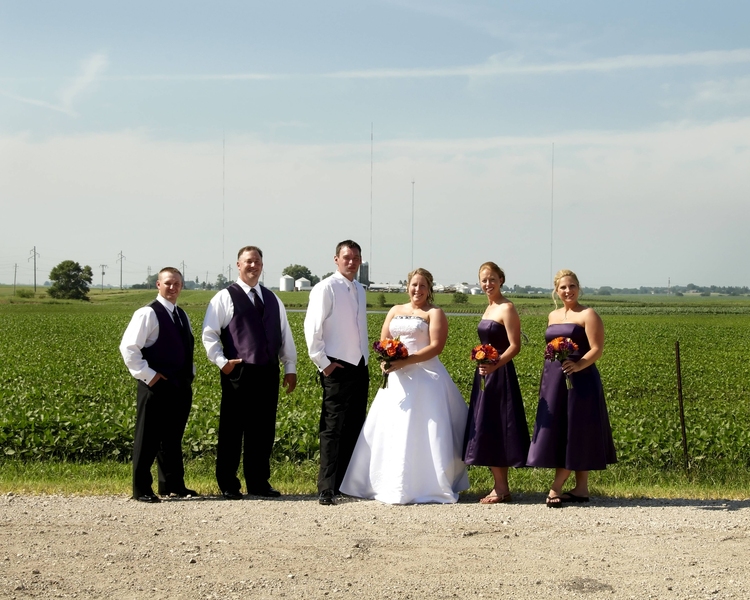Candice Engler, a senior product engineer for Deere & Company and a student in MIT's System Design and Management (SDM) program, discovered her affinity for engineering while growing up on a 2,800-acre farm in Ankeny, Iowa. Each morning, her father maneuvered a tractor through rows of corn and soybeans. One day, he asked her to help him construct a sprayer that would apply pesticides to the crops to control weeds and insects.
Some 12-year-olds might have responded by scratching their heads, but Engler picked up a tape measure and jumped right in. Working with her father inside the family's barn, she then cut and welded steel tubes and calculated the angles to mount the hydraulic cylinders. After a month of labor, she and her father attached a working, three-point sprayer to the tractor's hitch.
"The sprayer we designed is an example of a complex system," Engler said. "It included a mechanical support structure to keep everything in place, a solution system to store and distribute the chemicals and a hydraulic system to fold the sprayer for road transportation."
Engler believes that "every good farmer is a good tinkerer" and to augment her interest in "tinkering" — applying math and science concepts to improve agricultural systems — Engler studied biosystems engineering at Oklahoma State University. While in the classroom, she learned new ways of mechanizing agricultural processes and thought about how she could apply them to her own farm. "Knowledge often travels in both directions between the fields of farming and engineering," Engler said.
After graduating with a BS in 2004, Engler soon went to work for Deere & Company as a manufacturing engineer. She started by streamlining the production of grain drills, which were stamped, assembled, painted and shipped by four separate departments. Rising quickly within the company, Engler soon turned her focus to software and systems architecture. As her responsibilities changed, so did her perspective.
"Early in my career, I focused on improving individual products," Engler said. "Now, I see a larger, overarching system. The end-user isn't buying a single piece of equipment; he or she wants an entire system in which all the machines work together seamlessly. In my current role in our precision farming group, I interface with the design engineer working on each of the individual products and bring a more holistic viewpoint."
In 2009, Deere & Company nominated Engler to attend the System Design and Management (SDM) Certificate Program in Systems and Product Development. By taking online courses for the certificate program, she could study at MIT without leaving her office. In fact, Engler sat at her desk in the morning and wore a headset, which allowed her to attend MIT synchronously and interact in real time with on-campus classmates and professors, as well as other students who attended from their workplaces.
"My professors' mentorship and the quality of the distance system made me feel like I was sitting right there in the classroom at MIT," Engler said.
Having completed her certificate, Engler is now earning a master's degree in engineering and management through the MIT SDM program because she wants to continue to broaden her perspective and gain additional tools to leverage.
"SDM has made me think about my job differently," Engler said. "My courses have taught me how to balance the needs of internal stakeholders with those of end-users. I'm excited to bring what I am learning in the SDM program back to Deere. I can see vast opportunities to apply systems thinking and improve our products and our business."
Some 12-year-olds might have responded by scratching their heads, but Engler picked up a tape measure and jumped right in. Working with her father inside the family's barn, she then cut and welded steel tubes and calculated the angles to mount the hydraulic cylinders. After a month of labor, she and her father attached a working, three-point sprayer to the tractor's hitch.
"The sprayer we designed is an example of a complex system," Engler said. "It included a mechanical support structure to keep everything in place, a solution system to store and distribute the chemicals and a hydraulic system to fold the sprayer for road transportation."
Engler believes that "every good farmer is a good tinkerer" and to augment her interest in "tinkering" — applying math and science concepts to improve agricultural systems — Engler studied biosystems engineering at Oklahoma State University. While in the classroom, she learned new ways of mechanizing agricultural processes and thought about how she could apply them to her own farm. "Knowledge often travels in both directions between the fields of farming and engineering," Engler said.
After graduating with a BS in 2004, Engler soon went to work for Deere & Company as a manufacturing engineer. She started by streamlining the production of grain drills, which were stamped, assembled, painted and shipped by four separate departments. Rising quickly within the company, Engler soon turned her focus to software and systems architecture. As her responsibilities changed, so did her perspective.
"Early in my career, I focused on improving individual products," Engler said. "Now, I see a larger, overarching system. The end-user isn't buying a single piece of equipment; he or she wants an entire system in which all the machines work together seamlessly. In my current role in our precision farming group, I interface with the design engineer working on each of the individual products and bring a more holistic viewpoint."
In 2009, Deere & Company nominated Engler to attend the System Design and Management (SDM) Certificate Program in Systems and Product Development. By taking online courses for the certificate program, she could study at MIT without leaving her office. In fact, Engler sat at her desk in the morning and wore a headset, which allowed her to attend MIT synchronously and interact in real time with on-campus classmates and professors, as well as other students who attended from their workplaces.
"My professors' mentorship and the quality of the distance system made me feel like I was sitting right there in the classroom at MIT," Engler said.
Having completed her certificate, Engler is now earning a master's degree in engineering and management through the MIT SDM program because she wants to continue to broaden her perspective and gain additional tools to leverage.
"SDM has made me think about my job differently," Engler said. "My courses have taught me how to balance the needs of internal stakeholders with those of end-users. I'm excited to bring what I am learning in the SDM program back to Deere. I can see vast opportunities to apply systems thinking and improve our products and our business."








